Similar presentations:
Medical Academy Named after S. I. Georgievsky of Crimea
1.
Medical Academy Named after S. I. Georgievsky of Crimea FederalUniversity
Department of Dermatovenerology and Cosmetology
PhD. in Medical Sciences, Department of Dermatovenerology and Cosmetology
Maraqa Мarwan Y.N
Мараках Марван Якин Нажи
1
2.
Development andAgeing
3. Introduction
INTRODUCTION4. Introduction
INTRODUCTIONMaintaining or recovering a youthful appearance is
a multibillion dollar industry driven by the desire for
healthy, great-looking skin—regardless of age.
Like other organs of the body, the physiological
functions and structures within the skin
continuously decline with advancing age.
5. Introduction
INTRODUCTIONLearning more about the process of skin
aging can help us understand how we can
delay and minimize some of the natural
skin-aging processes.
6. Signs of Aging Skin
SIGNS OF AGING SKINWhether consciously or not, we associate the age and attractiveness
of an individual with the appearance of his or her skin. Outward signs
we associate with aging skin include:
Dry skin.
A dull, rough complexion.
Fine lines and deep wrinkles.
Loss of firmness along the jaw line and around the eyes.
Enlarged pores.
Clusters of irregular pigmentation often referred to as age
spots.
7.
GeneticsEvolution
theory
Biochemistry
Endocrinology
Ageing
Comparative
biology
Bioethics
Ageing-related
disease
cardiovascular
disease, Alzheimer’s,
cancer, diabetes, etc
Cell biology
Regenerative
medicine
stem cells
Demography
8. Fat
FAT-A youthful look depends on having the right amount of
facial fat in right places. Redistribution, accumulation,
and atrophy of fat lead to facial volume loss.
• Some areas lose fat (forehead and cheeks).
• Other areas gain fat (mouth and jaw).
• Modification of the fat pads leads to contour
deficiencies.
9. Bone
BONE•There is a significant loss of facial bone with age.
•Aging of the craniofacial skeleton may be due to changes in relative dynamics of
bone expansion and bone resorption.
•Bone resorption leads to biometric volume loss.
•Without the structural support of bone, there are noticeable changes in the other
layers of overlying soft tissue and skin
10. Signs of Facial Aging
SIGNS OF FACIAL AGING• Greater visibility of bony
landmarks, lines and wrinkles
• Prominence of transverse
forehead lines
• Nasolabial folds become more
prominent
• Hollowing of the mid-face (loose
skin)
• Changes in area around the
mouth (vertical wrinkles, lip
thinning and flattening)
• Development of prejowl
depression
11. What Causes Aging?
WHAT CAUSES AGING?There are three types of aging responsible for the decline in skin health and
function:
Biological aging (intrinsic)—The result of changes, often genetically
determined, that occur naturally within the body.
Environmental aging (extrinsic)—The result of free radical damage generated
by accumulated exposure to sunlight (photoaging), pollution, or cigarette
smoke.
Mechanical aging—The result of continually repeated wrinkle-causing
behaviors.
12. Biological Aging
BIOLOGICAL AGING13. What is Biological Aging?
WHAT IS BIOLOGICAL AGING?Everyone has a biological clock or
chronological age determined by their
genetic makeup. This applies to the skin as
well. As our biological clock ticks, our skin
gradually loses its ability to function as it
once did.
Biological aging occurs as a result of natural
changes within the body that are manifested
as outward signs of aging on the skin.
14. Biological Aging
BIOLOGICAL AGINGOften changes associated with
biological aging are the result of a
gradual shift in the balance of
certain hormones and messenger
molecules excreted by other
glands and organs within the body.
Many of these changes are
genetically determined and cannot
be stopped.
Dermal Papillae
Epidermis
Dermal Epidermal
Junction
Elastin
Fiber
Mast Cell
Dermis
Collagen
Fiber
Blood
Vessels
Fibroblast
Cell
Glycosaminoglycans
15. Delaying Biological Aging
DELAYING BIOLOGICAL AGINGResearch is beginning to reveal that a
healthful diet full of antioxidant-rich
fruits and vegetables, along with
nutritional supplementation and topical
application of key nutrients, may help
decrease the intensity and delay the
onset of many of these changes.
16. INTRINSIC SKIN CHANGES
• Epidermis• Keratinocytes demonstrate slower turnover.
• Keratin sloughs more slowly with thickening of keratin
layer.
• Melanoctyes decrease in number and produce less
melanin.
• Uneven melanin pigment distribution.
• Flattening of the epidermis-dermis junction. Prone to
blistering.
17.
Dermis
• Fibroblasts – Decreased number and less collagen
production.
• Collagen – Decreased quantity. Abnormal, weakened
structure.
• Elastin – Thickened fibers with less elasticity.
• Matrix – Decreased quantity.
• Blood vessels – dilated, thinned and weakened walls,
prone to rupture.
18.
Subcutaneous Layer
Fat loss and thinning.
Weakening of the retaining ligaments.
Fewer blood vessels.
Sweat glands - decreased.
Sebaceous glands – Fewer with less sebum
production.
• Hair shafts – fewer and thinner with less pigment.
19. Cytoskeleton and Skin aging
CYTOSKELETON AND SKIN AGINGAged skin has increased rigidity
Due to an increase in F actin filaments
Important in age related loss of elasticity of the skin.
20. Endocrine System and Aging
ENDOCRINE SYSTEM AND AGINGWith aging, the levels of epidermal precursor of vitamin D3 decrease.
Older individuals are more susceptible to vitamin D3 deficiency in absence of regular sun
exposure.
May lead to osteoporosis, psoriasis and skin cancer
21. Endocrine System and Aging
ENDOCRINE SYSTEM AND AGINGEstrogen stimulates fibroblasts to make collagen
Decreased levels of estrogen are associated with loss of collagen and increased wrinkling
HRT protects skin from aging
Baumann, L. “A dermatologist's opinion on hormone therapy and skin
aging,” Fertility and Sterility 2005 Aug;84(2):289-290.
22. Age related changes in metabolic functions
AGE RELATED CHANGES IN METABOLICFUNCTIONS
Reduced oxidative phosphorylation by mitochondria
Diminished synthesis of structural, enzymatic and regulatory
proteins
Decreased capacity for uptake of nutrients
Increased DNA damage and diminished repair of
chromosomal damage
Accumulation of oxidative damage in proteins and lipids (eg
lipofuscin pigment)
Accumulation of advanced glycosylation end products
23. Morphological alterations
MORPHOLOGICAL ALTERATIONSIrregular and abnormally lobed nuclei
Swollen, pleomorphic and vacuolated mitochondria
Decreased endoplasmic reticulum
Distorted Golgi apparatus
24. Environmental Aging
ENVIRONMENTAL AGING25. Environmental Aging
ENVIRONMENTAL AGINGEnvironmental aging occurs as a result of exposure
to harsh weather conditions and daily exposure to
trillions of free radicals from a variety of sources:
The sun’s ultraviolet rays (photoaging)
Pollution
Smoke
External stress
26. Environmental Aging
ENVIRONMENTAL AGINGFree radicals damage lipids, proteins, and
DNA, which have the following effects on
our cells:
Limits ability of cells to function.
Cripples the integrity of overall cell
composition.
Years of accumulated environmental stress
on cellular structures results in the
premature aging of the skin.
Mitochondria
DNA
Damaged cell
Free radicals damage lipids,
proteins, and DNA
27. Environmental Stressors
ENVIRONMENTAL STRESSORSSun exposure leads to photoaging. Photoaging damages
collagen, elastin, melanocytes, and the moisture barrier,
resulting in wrinkles, sagging, uneven skin tone, dark spots, and
a rough, dry texture.
Pollution damages skin by increasing free radical production
and amplifying the effects of UV radiation.
Harsh weather (dry, wind, and cold) depletes skin of essential
moisture, resulting in a rough texture and fine, dry lines.
Cigarette smoke increases free radical production and may
decrease collagen and elastin production. Cigarettes also
significantly decrease the supply of oxygen to skin cells.
28.
29. Photoaging
PHOTOAGINGAlthough cigarette smoke, exposure to harsh
weather conditions, and pollution are prolific
contributors to environmental aging, UV
damage from the sun’s rays accounts for 90
percent of premature skin aging.
The damage to skin components caused by
both prolonged and incidental sun exposure is
called photoaging.
30. Mechanical Aging
MECHANICAL AGING31. Mechanical Aging
MECHANICAL AGINGMechanical aging occurs as a result of
habitual muscle movements repeated day
after day and year after year, and
generally results in deep wrinkles along
stress lines and loss of skin firmness.
32. Wrinkle-Causing Behaviors
WRINKLE-CAUSING BEHAVIORSAlthough it is unrealistic to avoid some wrinklecausing behaviors such as smiling and frowning, the
following behaviors should be avoided to help
prevent premature signs of mechanical aging:
Squinting
The thinker stance (resting chin or cheek in the
hand)
Sleeping on your side or stomach
Scrubbing with hot water
Weight fluctuation
Unbalanced diet and lack of sleep
Pursing the lips while smoking or drinking from a
straw
33. Evidence of Aging Changes in Physiology
EVIDENCE OF AGINGCHANGES IN PHYSIOLOGY
34. Evidence of Aging—Changes in Skin Physiology
EVIDENCE OF AGING—CHANGES IN SKIN PHYSIOLOGYSkin aging results from the deterioration of
structures in the skin and the slowing of healthy
skin function.
Let’s take a closer look at the visible signs of skin
aging and what is happening inside the skin to
cause these changes.
35. Evidence of Aging
EVIDENCE OF AGINGDry skin
Dull, rough complexion
Fine lines and deep wrinkles
Loss of firmness
Enlarged pores
Age spots
36. Dry Skin
DRY SKIN37. Evidence of Aging—Dry Skin
EVIDENCE OF AGING—DRY SKINHealthy, young skin maintains
appropriate moisture levels
through the sealing properties of
the moisture barrier, which is
composed of keratin-filled
keratinocytes (skin cells)
surrounded by and sealed together
with interspersed epidermal lipids
(ceramides, lipids, and fatty acids).
Stratum
Corneum
(Moisture Barrier)
38. Evidence of Aging—Dry Skin
EVIDENCE OF AGING—DRY SKINAs we age, the skin produces fewer
ceramides, lipids, and fatty acids to seal
the moisture barrier, resulting in an
increase in transepidermal water loss and
dryness. Decreased production of
epidermal lipids is attributed to the
natural decline in hormone levels.
39. Evidence of Aging—Dry Skin
EVIDENCE OF AGING—DRY SKINSeveral other preventable factors can also strip epidermal lipids and
cause excessive dryness.
Improper skin care—Using harsh cleansers and neglecting to
supplement the skin with rich, nourishing moisturizers.
Harsh weather conditions—Enduring extreme temperatures and
wind without adequate moisturizers and protection.
UV radiation—Neglecting to protect skin with sunscreen from the
sun’s UV rays.
40. Dull, Rough Complexion
DULL, ROUGH COMPLEXION41. Evidence of Aging—Dull, Rough Complexion
EVIDENCE OF AGING—DULL, ROUGH COMPLEXIONHealthy, young skin remains smooth and
radiant because fresh, new cells are
brought to the surface as older cells are
continuously shed.
The skin cells in the bottom layer of the
epidermis (Stratum basale) constantly
divide through cell division, forming new
keratinocytes.
This regenerative process is called skin
cell renewal.
Layers of
Epidermis
Basal
Cells
Divide
42. Cell Renewal Decreases
CELL RENEWAL DECREASESAs we age, the rate of skin cell renewal
decreases, causing cells to become more
sticky and to not shed as easily. As a result of
cell renewal decreasing, the skin becomes
thinner and more susceptible to environmental
damage, especially photodamage from the
sun’s UV rays. Eventually, the skin appears
dull and rough in texture.
43. Why Skin Cell Renewal Declines
WHY SKIN CELL RENEWAL DECLINESThe process of skin cell renewal declines as we age because of several factors:
Weakened blood vessels in the dermis and a flattening of dermal
papillae decreases the surface area between the dermis and epidermis
across which nutrients can diffuse. This process decreases nutrient and
oxygen supplies to the basal cells in the lower epidermis.
UV exposure can penetrate the epidermis, damage basal cells, and
slow their rate of division.
Failure to exfoliate the surface of the skin with physical and chemical
exfoliates for the purpose of smoothing the skin and stimulating cell
renewal.
44. Loss of Firmness
LOSS OF FIRMNESS45. Evidence of Aging—Loss of Firmness
EVIDENCE OF AGING—LOSS OF FIRMNESSAnother skin structural protein
found in the dermis is elastin.
This coil-like protein has the
ability to snap back into place
after stretching, giving the skin
its elastic quality.
Epidermis
Dermis
46. Evidence of Aging—Loss of Firmness
EVIDENCE OF AGING—LOSS OF FIRMNESSAs we age, elastin fibers lose much of
their resilience and elastin production
within the fibroblasts decreases. This
overall decline in healthy elastin levels
results in areas of decreased firmness,
especially along the jaw line, neck, and
around the eyes.
Epidermis
Dermis
47. Evidence of Aging—Loss of Firmness
EVIDENCE OF AGING—LOSS OF FIRMNESSAll three types of aging contribute to the skin’s loss of firmness:
As we age, our body naturally produces more of the hormone
DHT. As DHT levels increase, elastin production is inhibited in
the fibroblasts.
UV rays can penetrate the skin to damage elastin-producing
fibroblast cells.
Mechanical stress due to repeated wrinkle-causing behaviors
can permanently stretch out elastin fibers.
As skin cell renewal decreases, wounds heal more slowly and
the skin thins, becoming more susceptible to environmental
damage. This can lead to damaged fibroblasts and decreased
elastin levels.
48. Enlarged Pores
ENLARGED PORES49. Evidence of Aging—Enlarged Pores
EVIDENCE OF AGING—ENLARGED PORESTo a large degree, pore size is determined
by genetics, but as we age, our pores tend
to appear larger. The pore’s enlarged
appearance is due to a buildup of dead cells
around the pore.
50. Evidence of Aging—Enlarged Pores
EVIDENCE OF AGING—ENLARGED PORESAs more collagen breaks down and
production slows, the supportive structures
surrounding cells decrease and cells can
appear stretched.
Keeping the skin exfoliated and the pores
clear will help reduce the appearance of
pore size. Also, consistently using a
sunscreen to protect collagen will help
maintain pore size.
51. Age Spots
AGE SPOTS52. Evidence of Aging—Age Spots
EVIDENCE OF AGING—AGE SPOTSNormal skin pigmentation helps protect
healthy skin from the stress of mild UV
exposure. Melanin, the skin’s photoprotective
pigment, is produced in specialized
melanocyte cells in the lowest layer of the
epidermis (Stratum basale).
Melanin
Melanocyte
53. Evidence of Aging—Age Spots
EVIDENCE OF AGING—AGE SPOTSAge Spot
As we age, melanocyte activity decreases, making the skin
more susceptible to UV damage. With age, melanocytes
also tend to cluster together. This results in patches of
pigmentation called age spots.
Melanin
Melanocytes
Clustering
54. Evidence of Aging—Age Spots
EVIDENCE OF AGING—AGE SPOTSMany factors contribute to the clustering of melanocytes as well as the production of age spots:
Hormone imbalances that occur with advanced age result in fewer melanocytes and can also trigger
excessive melanin production by remaining melanocyte clusters.
UV light rays stimulate melanocytes to produce skin pigment.
UV light can also penetrate the skin and damage melanocyte DNA, which can stimulate melanocytes
to enlarge and cluster together.
55. Evidence of Aging—Age Spots
EVIDENCE OF AGING—AGE SPOTSFactors contributing to the clustering of melanocytes as well as the production of age
spots (continued):
• Poor skin care habits can lead to skin irritation, which triggers melanin
production.
• As the cell renewal cycle decreases, wounds heal more slowly and the skin
thins, becoming more susceptible to environmental damage. This can lead to
damaged melanocytes and abnormal pigmentation.
56. Prevent Premature Skin Aging with Proper Skin Care
PREVENT PREMATURE SKIN AGINGWITH PROPER SKIN CARE
57. Is Skin Aging Inevitable?
IS SKIN AGING INEVITABLE?Because youthful, healthy skin portrays
confidence and beauty, we are all concerned with
what we assume is inevitable skin aging.
The good news is that we have more control than
we realize over the rate at which our skin ages.
58. Proper Skin Care
PROPER SKIN CAREMaintaining youthful skin starts with good
skin care. Using products specifically
formulated for your skin type is the first step
to preventing unnecessary skin damage.
59. UV Protection
UV PROTECTIONThe majority of premature, avoidable skin aging is caused
by UV radiation, so it is absolutely essential to use a
daytime moisturizer with sunscreen.
Even if you aren’t in the sun for extended periods, effects
of incidental sun exposure accumulate and show up on the
skin.
60. Turning Back Your Skin’s Clock
TURNING BACK YOUR SKIN’S CLOCKEven if you did not properly care for your skin in
years past, there are many technologically
advanced ingredients and exceptional botanicals
that help repair sun damage and reverse some of
the effects of both biological and mechanical aging.














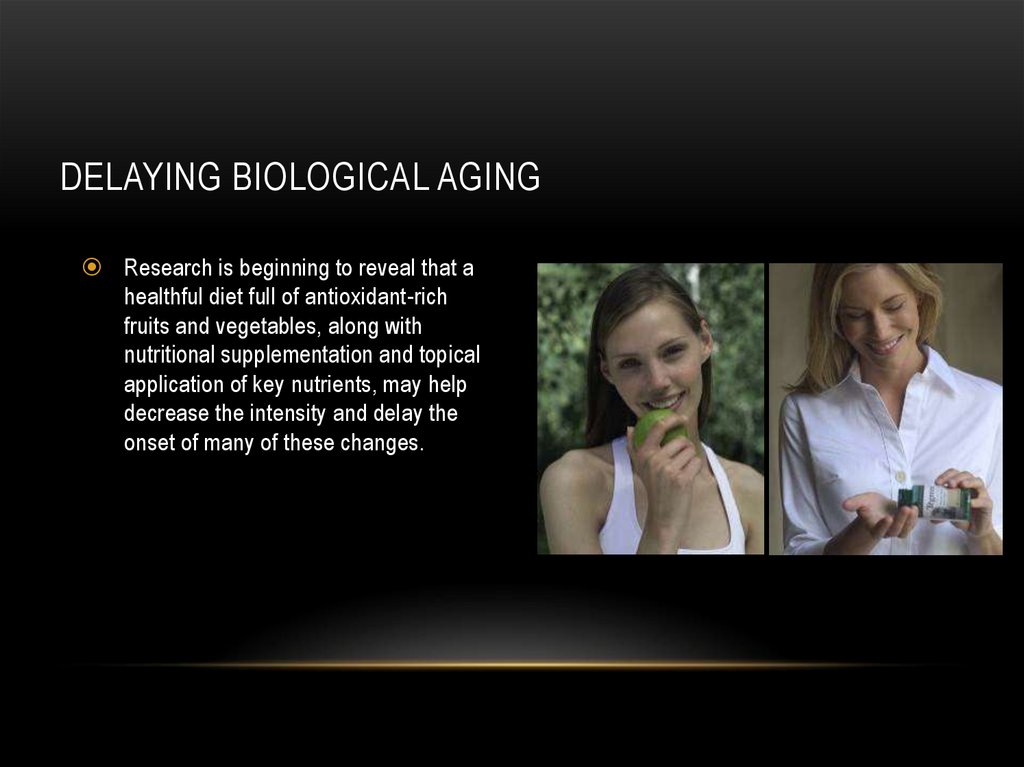







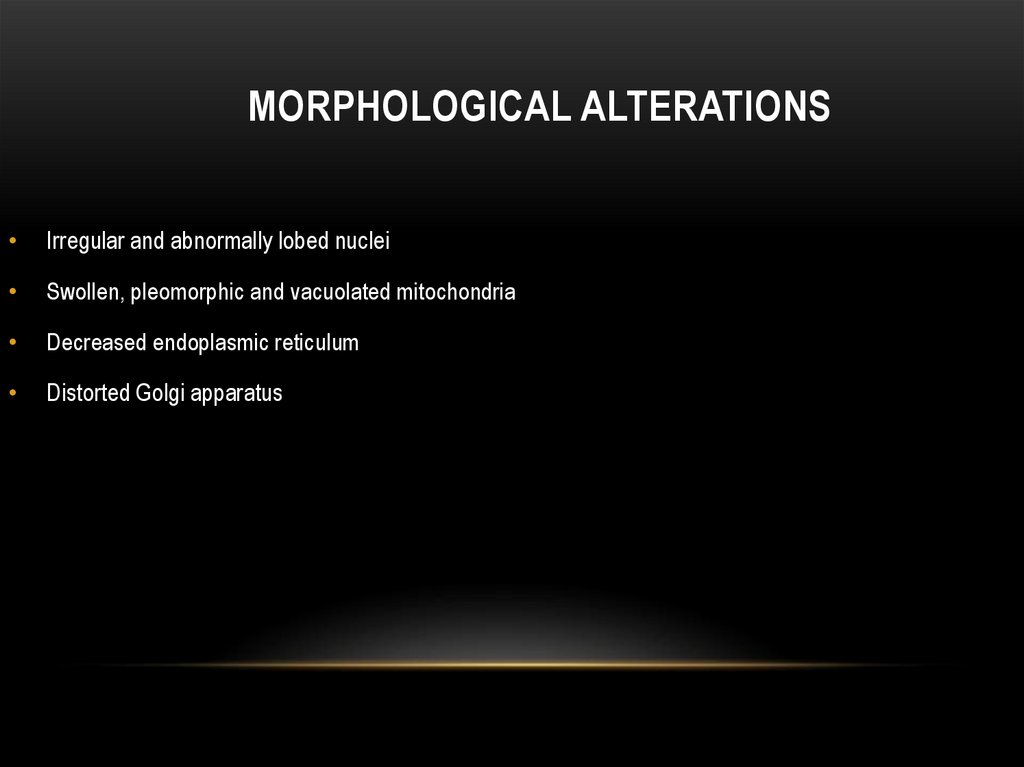

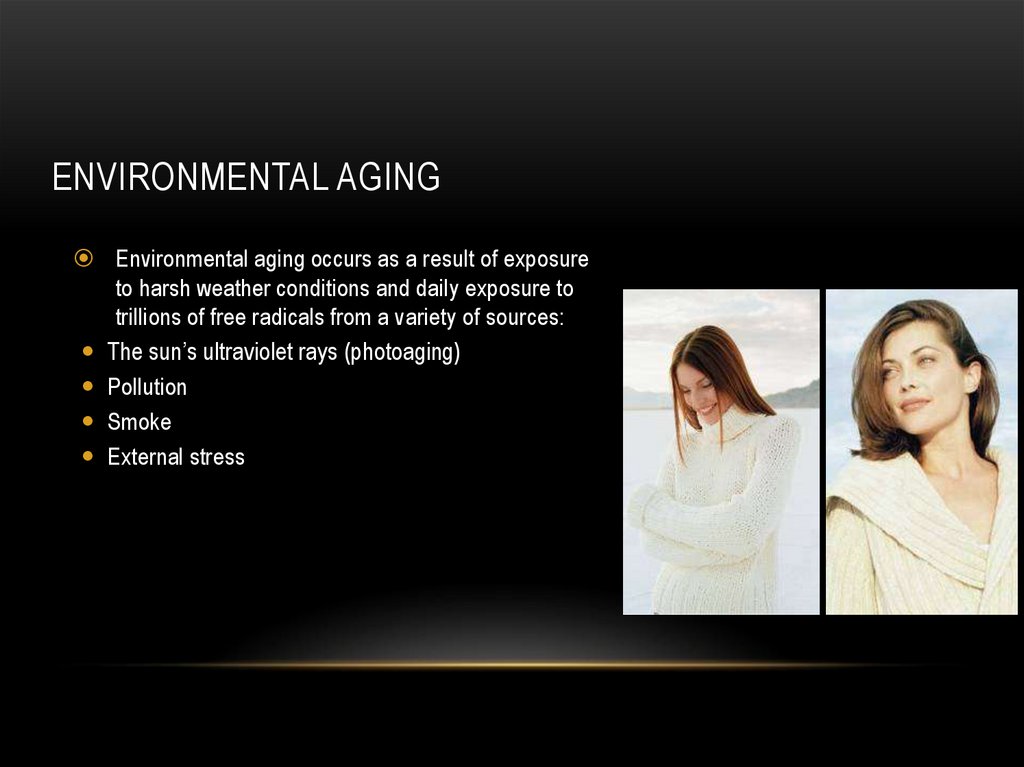


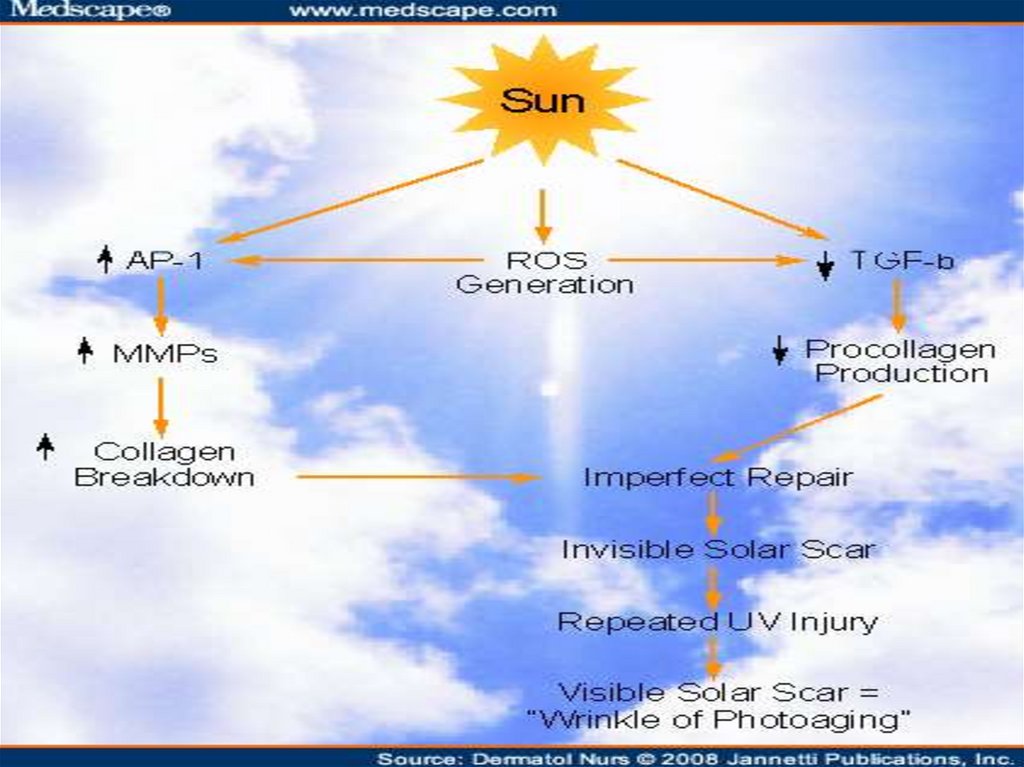


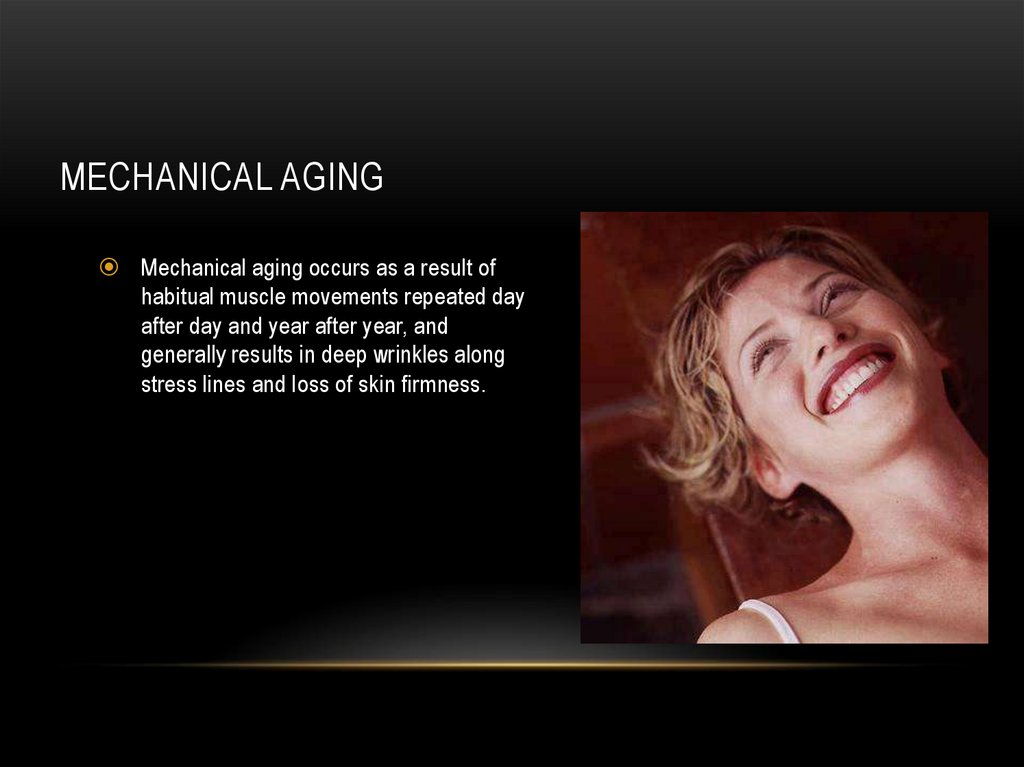
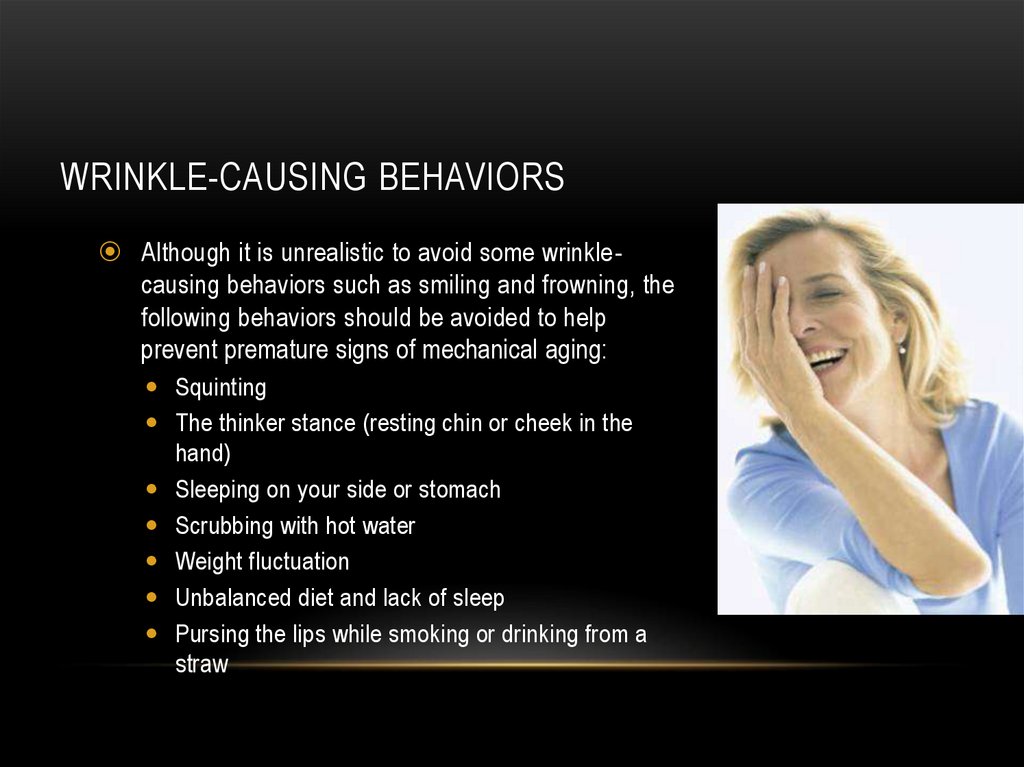
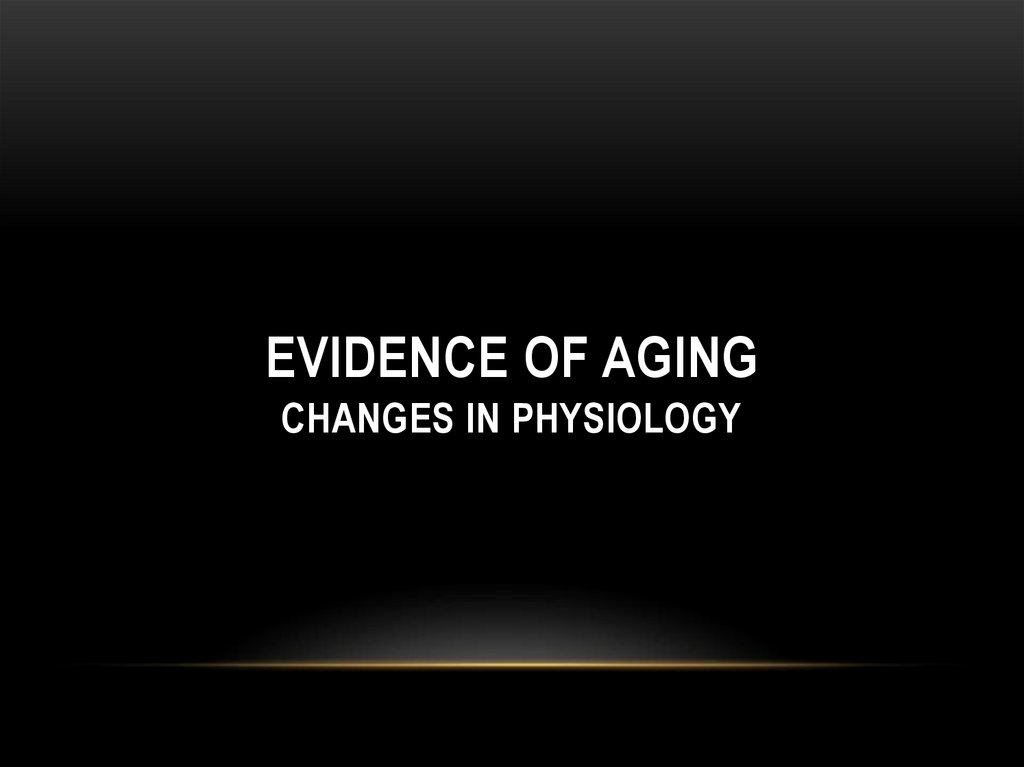

























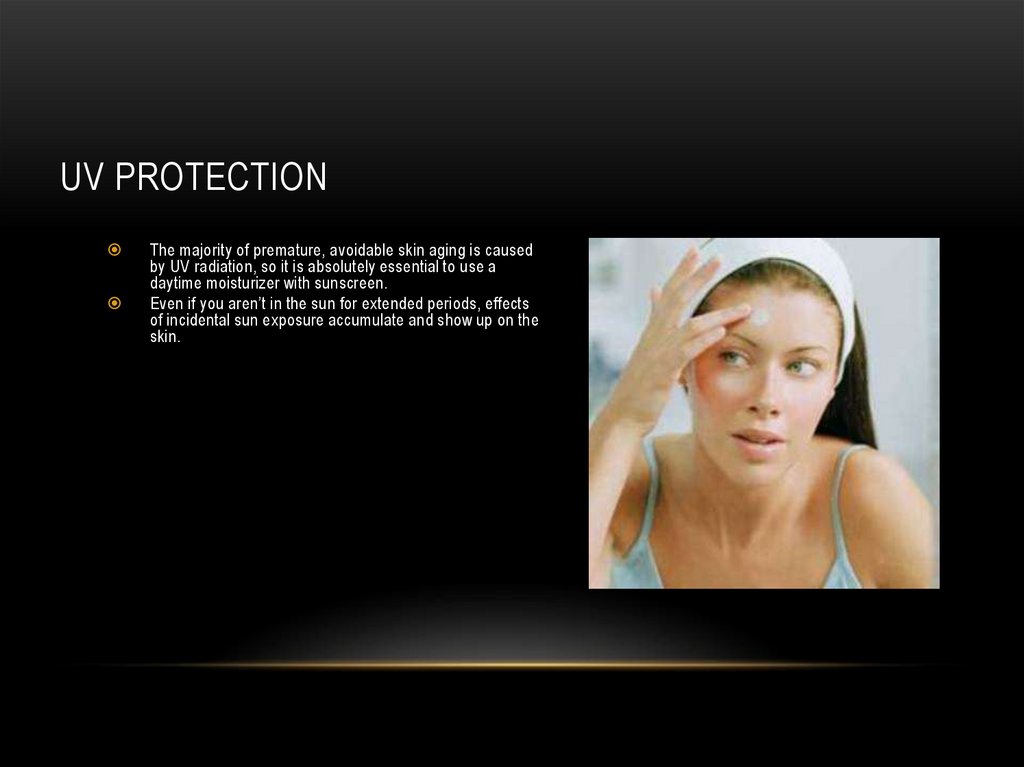
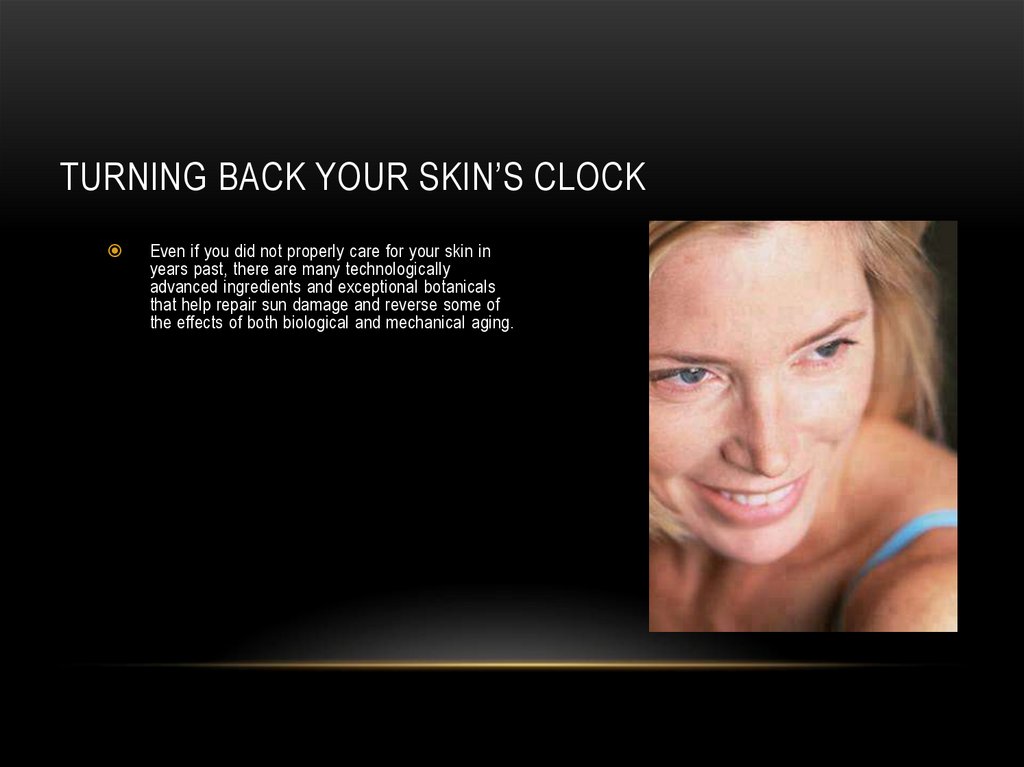

 biology
biology






